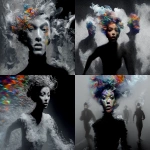Explore the Best AI Image Gallery

AI Lens: Reframing Product Photography with Artificial Intelligence
The world of photography has always been a space where creativity meets technology. But in recent years, a new player has emerged: artificial intelligence (AI). AI is no longer confined to the realm of science fiction; its actively reshaping industries, and product photography is at the forefront of this transformation.
From automating tedious tasks to generating stunning visuals, AI is revolutionizing how products are presented online. This blog post delves into the impact of AI on product photography, exploring its potential uses, ethical considerations, and future trends.
Automating the Workflow: Efficiency Meets Precision
One of the most significant impacts of AI in product photography is automation. AI-powered tools can now handle tasks that traditionally required hours of manual labor, such as:
- Image Editing and Retouching: AI algorithms can automatically remove blemishes, adjust lighting, enhance colors, and perform other edits with remarkable accuracy, saving photographers valuable time and resources.
- Background Removal: AI can seamlessly isolate products from their backgrounds, allowing for greater flexibility in image composition and presentation.
- Image Generation: AI models like DALL-E 2 and Midjourney can generate entirely new product images based on text prompts. This opens up exciting possibilities for creating unique visuals without the need for physical photography sessions.
Beyond Automation: The Creative Potential of AI
While AI excels at automating tasks, its potential extends far beyond mere efficiency. It empowers photographers to explore new creative avenues:
- Style Transfer: AI can apply the artistic style of a famous painting or photograph to product images, resulting in unique and captivating visuals.
- 3D Model Generation: AI algorithms can create 3D models from 2D product images, enabling virtual product showcases and interactive experiences.
- Personalized Product Visualization: AI can tailor product images based on individual customer preferences, such as color choices or desired perspectives.
Navigating the Ethical Landscape
The integration of AI in product photography raises important ethical considerations:
- Transparency and Disclosure: It is crucial to be transparent about the use of AI in creating product images. Consumers should be aware when visuals are generated or manipulated by algorithms.
- Bias and Fairness: AI models can perpetuate existing biases if trained on biased data. Its essential to ensure that AI-generated imagery reflects diverse perspectives and avoids harmful stereotypes.
- Intellectual Property Rights: The ownership of AI-generated images is a complex legal question that requires careful consideration.
Looking Ahead: The Future of AI in Product Photography
The future of product photography is undoubtedly intertwined with AI. As technology continues to advance, we can expect:
- More sophisticated AI models: AI algorithms will become even more capable of generating realistic and creative product images.
- Seamless integration with eCommerce platforms: AI-powered tools will be seamlessly integrated into online shopping experiences, enabling personalized product visualization and dynamic content creation.
- Increased focus on ethical development and deployment: The industry will prioritize responsible AI practices to address concerns related to bias, transparency, and intellectual property.
AI is not simply automating tasks in product photography; its reshaping the creative landscape. By embracing its potential while navigating ethical considerations, we can unlock new possibilities for captivating audiences and redefining how products are presented in the digital world.


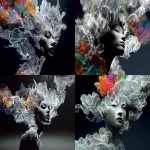


](https://images.ai-img.art/thumbnails/150/7cf5a08238f29c821f52bb4f63db48af0b7f633ff3b9f7253074d78ced9ff6f6.webp)







](https://images.ai-img.art/thumbnails/150/847809c77ca9a73b68bc190e6efb06fec87157685a243730d5a66a403b0e6e10.webp)

](https://images.ai-img.art/thumbnails/150/685ae68cfab93a7e59a71206867b060c45bd6fd3cd561c4fe60fca514b09c5f8.webp)
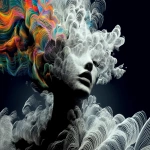
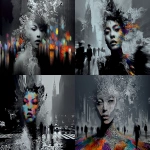




](https://images.ai-img.art/thumbnails/150/2ebdeb4f7db35100e5be5de9bc3e533a40d14e5feedefd7ffc586524a0f3ba8c.webp)


](https://images.ai-img.art/thumbnails/150/ff09e32d2be011c0dd785984c5c1e47839ce551a31da1bde242860b30df2aa30.webp)

](https://images.ai-img.art/thumbnails/150/bd056a4718c27444e064198762f8dc8ffa1f74f1afd7dcda8d5cb8b142797d6e.webp)

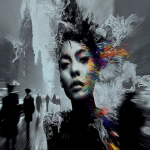




](https://images.ai-img.art/thumbnails/150/0ba0be922ab76af53f75ab90126ae2b18a600ee3b96941e8ab897a9f10594e5a.webp)









](https://images.ai-img.art/thumbnails/150/a3ed6513a6661aa3ee46e0c2924d1e8888854e91d8908de39db5590dc41f8d8f.webp)




